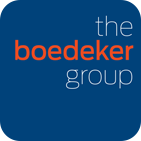
WHAT IS MARKET SEGMENTATION?
Market segmentation is breaking down your market into smaller, more specific groups. These groups will have similar characteristics so companies can more effectively market and sell into various segments.
WHY SEGMENT YOUR MARKET?
Most companies do not have the resources (internal or financial) to market to everyone and they recognize that not everyone is a potential customer of theirs. Segmenting their market allows them to tailor the marketing of their product or service to those that are most likely to be interested in purchasing.
HOW TO SEGMENT YOUR MARKET?
Let’s assume you’re starting a new T-shirt shop. You’ll naturally have a lot of questions:
- Is there a market for this type of T-shirt?
- Who would be most likely to buy it?
- What do the people who would be my target customers care most about when selecting their T-shirts?
- Where do they live?
- How much money can I charge for a T-shirt?
Segmenting your market can help you pinpoint the specific demographic, psychographic, geographic and behavioral characteristics of those who would be your ideal targets.
Here are four of the most common ways to segment your market.
Demographics: Demographic segmentation divides the market by quantifiable statistics. While the demographics used may vary between business to business (B2B) and business to consumer (B2C) transactions, in both cases the data that is used about the target customer or company is based on fact.
Demographics used in B2C companies may include age, race, gender, occupation, income, marital status, and education. Nike is a large company that heavily relies on market segmentation by demographics. They have found that their best customer prospects are active, high-earning young people who can spend more than $100 for a pair of shoes. Nike is focusing their marketing efforts on 12 key cities where they have the best chances of finding these types of customers.
Demographics in B2B companies may include the size of the company, industry, job function(s) of the decision-maker(s), years in business, etc. A search engine optimization company, for example, could technically do work for just about any industry. However, such a company may decide to focus marketing efforts on small to midsize law firms in the northeast. That’s using demographics in a B2B space.
Psychographics: Psychographic segmentation focuses on characteristics that are more intangible and not as easy to categorize. These include belief systems, attitudes, personality characteristics, values, motivations, etc., You have to do a bit more research to uncover these characteristics, but they can be found. Market research, including surveys, personal interviews, focus groups, even analysis of your company website analytics, can tell you things about your target end user. For example, an architecture firm that specializes in building passive houses (a building standard that when implemented on a new building or retrofit is able to reduce heating and cooling energy usage by 80-90%) likely isn’t targeting all married couples in NYC looking for a redesign. They may instead target people who are environmentally conscious and interested in green technology and green energy sources. Using psychographic research, they would be able to focus their marketing resources on those who are willing to pay a bit more on upfront costs (2-4%) because they are passionate about cleaner energy.
Geographical: Your company may have different markets based on where your target customers are located. You are less likely to see down coats for sale in Miami during the summer than in Chicago during the winter. By using geographic segmentation, you can optimize your marketing strategy by cities, states, regions, even countries where your customers may live. Large companies with locations around the world rely on geographic segmentation to determine the products they’ll offer in various locations and how they’ll market them, even changing naming conventions as needed. Take McDonald’s as an example. They offer a Peaches-and-Mango pie in their Hawaii locations, a McBratwurst in Wisconsin and Illinois, and a Chicken Singaporridge in Singapore. Even the names of their products vary based on geographic segmentation. In the United States, where the Imperial measurement system is used, McDonald’s sells the Quarter Pounder. In countries that utilize the metric system, they sell the same burger under the name Royal or McRoyal.
Behavioral Segmentation: If demographics and psychographics are about who your customers are, behavioral segmentation focuses on what they do; how they act. Some common ways to segment by customer behavior utilize perceived benefits of your product or service, purchasing behavior, usage, customer satisfaction, and loyalty. Behavior segmentation can be broken down into smaller sub-sections. Below is an example of how one company more closely targeted their market based on customer loyalty. They broke their market into the following user segments:
- Current users: This portion of the market has an active subscription to the service.
- Users of competitors’ products: This segment recognizes the value in the type of service this company offers but is currently using a competing product.
- Defectors: This segment was using the company’s service and dropped it.
- Non-users: This portion of the market has never utilized the type of service this company offers.
The above could be even further segmented if warranted. You may wish to look at users in various categories (e.g. heavy – medium – light users or have a category for how long they’ve been a customer) or defectors according to the likelihood of winning them back. The customers who have regularly been using your products/services the longest may receive a loyalty discount. You may offer introductory pricing for non-users. You may develop a new facet of your product that could win back defectors and market accordingly. Breaking down by usage is just one way of breaking down your segment by behavior.
By moving from the idea of “everyone is my customer” to having a specific set of criteria for your target market(s), your internal and financial resources can go much further.
And if you’re just starting off selling T-shirts, you now know who is most likely to want to purchase one of yours.
Feel free to ask me questions in the comments below and I would be happy to answer them. Follow me on LinkedIn to know more about my work.

